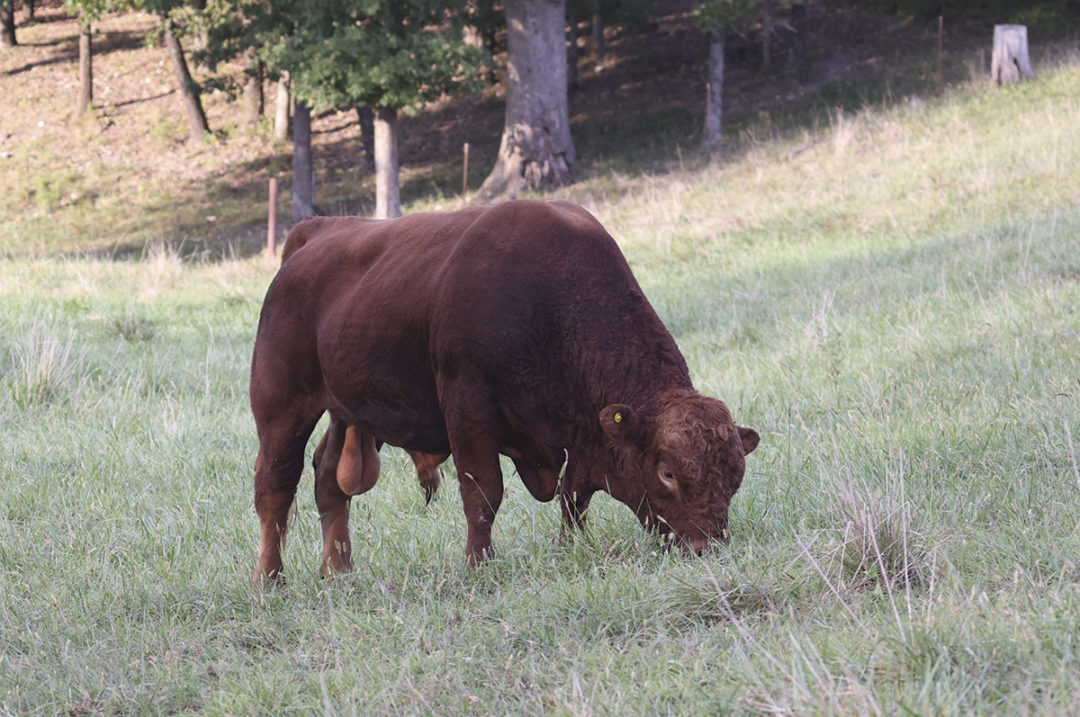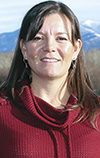Every environment possesses its challenges and advantages for cattle production. From limitation on forage and water to managing fescue, heat stress or high altitudes, the diversity of cattle has been an asset to the beef industry and allowed for the utilization of land that agriculture would otherwise not use. However, some cattle perform better in specific environments compared to others, which can have a large impact on operational success.
When selecting a bull, you want a bull who will add value to your operation, but the bull and his progeny must also be able to survive and thrive in the environment within your fences. The bull's genetics should contribute immediate economic gain, but in many cases, he is also expected to enhance the longevity and sustainability of the operation through heifer retention. So how do you choose the right bull? Selection can be boiled down into answering two basic questions: How will his progeny be marketed, and what are your resource limitations?
Step 1: Have a breeding plan
Genetics from a bull can remain in a herd for 50 or more years if you retain replacements. In addition, the genetic interval in cattle is five to six years, which is the average age of an animal when its replacement is born. As a result, the rate at which genetic improvement can be made in a herd is slow, especially compared to other livestock species. When looking to make genetic improvements, you want to have the long game in mind. A bull can have an enormous impact on the herd’s genetic makeup, as he could sire 20 or more calves in a single breeding season. This contrasts with a cow, who will only have one calf per year. As a result, selecting the right bull is crucial for improving your herd’s genetic merit.
To establish a breeding program, you need to determine where your herd’s performance will go and what you want to improve. Establish which traits affect your profitability and how vital each trait is to your operation. This should not boil down to a single trait; all the traits that contribute to the bottom line should be included in your breeding strategy. A breeding plan should be unique to your operation; consider how and when you market your calves and your resource limitations. Your breeding plan should be specific, measurable and attainable, and any bull you purchase should help move your herd toward your breeding goals. You want to select a bull who contributes to the economic goals of your operation, but this needs to be specific to your operation.
For example, if you retain ownership of your calves compared to your neighbor who sells his calves at weaning, your focus would be on post-weaning traits such as yearling weight and carcass compared to your neighbor, who would be focused on weaning weight exclusively. If replacement females are raised on-farm, the breeding plan (in both cases) needs to be retooled.
Step 2: Let’s talk environment
Once you’ve established the economically relevant traits to your operation, now you need to consider your resource limitations. The question you need to ask yourself is, does your breeding objective match your environment and management? In some cases, your resource limitations are determined by environmental factors you have to manage but cannot control. Maybe you have to manage fescue in your pastures or are running cattle on rangeland with limited forage availability. Are you located in an area prone to drought with limited water sources, or are you in an area where heat stress is an issue? It is essential to match your genetics to your environment. Failing to do so can result in poor animal performance and loss of numbers due to either culling open cows or, in some cases, high death loss, ultimately leading to an operation failing.
For example, increasing milk potential – via Milk (MK) or Total Maternal (TM) expected progeny differences (EPDs) – in a herd to increase calf weaning weights may be a viable option for operations with ample pastures or feed resources. However, challenging those genetics through a prolonged drought can be more problematic than more moderate performance. In harsher environments, where feed and grazing may be limited, the higher metabolic requirement of the cow could be detrimental to her ability to thrive, resulting in lower pregnancy rates and fewer calves born. Operations with limited forage availability should maintain a moderate mature weight and milk level for their cow herd. As a result, the weaning weights for their calves are nothing to brag about; they stay in business through a lower cull rate. They may also turn focus to improving feedlot and carcass performance (post-weaning performance). This balances the limitations of what the environment can support and emphasizes traits that can be improved without the environmental constraints of the ranch or farm.
Step 3: Choosing your bull
You’ve done your homework, identified your economically relevant traits, established what traits you want to improve and how, and incorporated your resource limitations into your 1breeding objective. One very important question: Is there a Selection Index or $Value Index that closely mirrors your breeding objective? Indexes are a form of multiple-trait selection where each trait contributes based on its economic relevance to the index definition.
If there is an index that contributes to your objectives, start sorting bulls on the index, yet still place emphasis on the traits most important to you. For example, if you are chasing grid premiums, but your cows have struggled in the past with fescue toxicity, place importance on the carcass index, but maybe hold MK EPD to below breed average. The bulls you identified may not rank in the top 10% for the index, but they should meet the criteria on all the other traits that would fit your operation. The key is finding bulls that match your operation’s specific needs, not your neighbor’s.
At this point, you should have a list of lot numbers that meet your demands ... genetically. Keep in mind that you still have to look at this bull (and potentially his daughters) for the next decade. Head to the pens and sort the list down even further on things such as disposition, feet, structure, muscle, scrotal circumference, frame size, etc. The last step, of course, is budget. If your short list of bulls will all enter the sale ring in the first 15 minutes of the auction, you might need to adjust your criteria, your budget or both.









